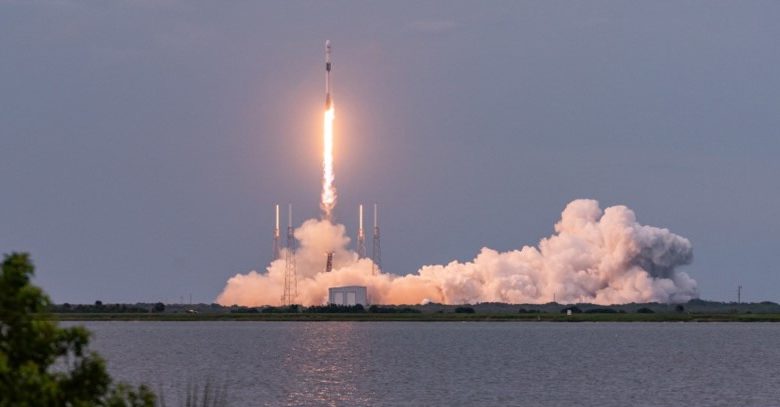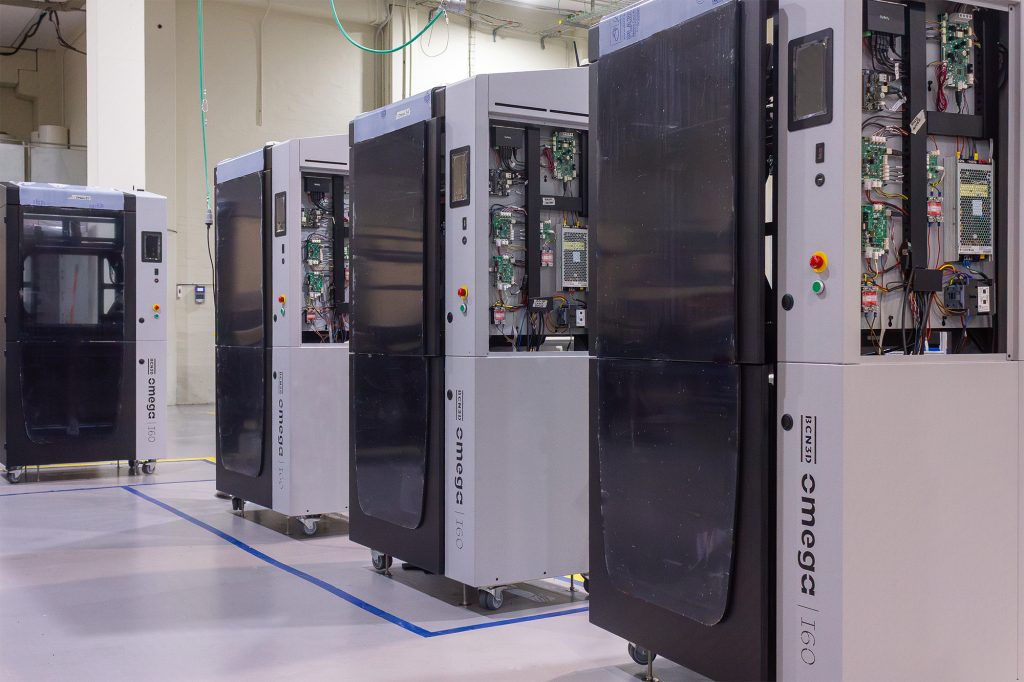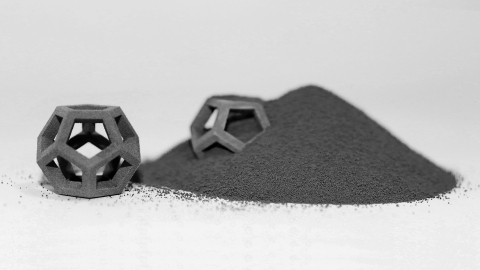Creality K1 SE 3D Printer, 2024 New Version 600mm/s High-Speed Hands-Free Auto Leveling Flagship-Level Direct Extruder Quick-swap Tri-Metal Nozzle K1 Upgrade 3D Printer
$279.00 (as of June 19, 2025 23:45 GMT +00:00 - More infoProduct prices and availability are accurate as of the date/time indicated and are subject to change. Any price and availability information displayed on [relevant Amazon Site(s), as applicable] at the time of purchase will apply to the purchase of this product.)Have you ever wondered how advancements in manufacturing technology are keeping the U.S. Department of Defense (DoD) ahead of the curve? By delving into the latest news from Concurrent Technologies Corporation (CTC) and their recent $4.4 million contract awarded by the U.S. Air Force Research Laboratory (AFRL), you’ll find a fascinating blend of cutting-edge technology and strategic ingenuity aimed at reshaping modern defense manufacturing.

Buy Photon Mono M5 Get Free 1KG Resin
The Big Announcement: CTC’s $4.4 Million Contract
Concurrent Technologies Corporation (CTC) recently took a giant leap forward in the realm of additive manufacturing (AM) by securing a significant $4.4 million contract from the AFRL. This contract represents the second phase of a large-scale project designed to develop a state-of-the-art AM machine specifically for the DoD’s advanced weapon systems.
You might be curious about why this contract is a game-changer. It’s all about overcoming current limitations in manufacturing large, sophisticated weapon system components, where traditional methods fall short. Advanced weapon system parts often require assembling smaller AM parts, which can lead to several problematic challenges such as strength issues, inconsistent mechanical properties, and limited design flexibility.
Below, let’s take an in-depth look at the details, objectives, and potential impacts of this groundbreaking project.
The Problem at Hand: Limitations of Current AM Equipment
As advanced as AM technology is, it still has its drawbacks when handling large, complex parts. Typically, smaller components are printed individually and then joined together. But this process has its issues:
- Strength Issues: The points where parts are joined can often be points of weakness, which is a significant problem for defense applications where structural integrity is paramount.
- Inconsistent Mechanical Properties: Different parts joined together might not share the same mechanical properties, leading to inconsistent performance and reliability.
- Design Flexibility: The size limitations of current AM devices restrict designers from creating larger, more versatile components in a single build.
Addressing these challenges requires developing novel AM technology capable of producing larger, more integrated parts that meet the stringent requirements of defense applications. That’s where CTC’s expertise and innovation come into play.
The Goals of the Project
CTC’s collaboration with AFRL aims to push the boundaries of what AM can achieve for defense applications. Their objectives are both ambitious and vital for modern defense manufacturing:
- Finalizing the Machine Design: Developing a machine that can seamlessly integrate into existing manufacturing workflows while offering enhanced capabilities.
- Installing the Equipment: Ensuring the new AM machine is operational and ready for rigorous testing.
- Conducting Qualification Tests: Running comprehensive tests to validate the machine’s performance and reliability.
- Printing Near- or Full-Height Representative Geometries: Demonstrating the machine’s ability to produce large parts with consistent mechanical properties and superior design flexibility.

$30 off $400+ Anycubic Products with code AC30OFF
The Tech Behind the Contract: AM Innovation
So, what makes this new AM machine so special? Let’s break it down into some of the essential components and technological advancements.
Design & Development
CTC’s full-service portfolio plays a pivotal role in this project, leveraging their extensive expertise in design, testing, post-processing, machining, and qualification. According to Edward J. Sheehan, Jr., President and CEO of CTC, “The technical work we are performing for this project includes elements of CTC’s full-service portfolio of AM capabilities including design, testing, post-processing, machining, and qualification.”
The Role of Collaboration
It’s worth noting that CTC isn’t working in isolation. They are collaborating with their technology transition affiliate, Enterprise Ventures Corporation, to provide transformative solutions throughout the project’s lifecycle. This collaboration extends the capabilities of both organizations, allowing them to tackle much larger and more complex challenges in defense manufacturing.
Measuring Success: Key Performance Indicators (KPIs)
The success of this project will be measured through several key performance indicators:
| KPI | Description |
|---|---|
| Machine Reliability | Ensuring the machine can produce large parts consistently without failure. |
| Mechanical Property Consistency | Validating that printed parts maintain uniform mechanical properties throughout. |
| Speed of Production | Evaluating the machine’s capability to produce parts quickly and efficiently. |
| Cost Efficiency | Measuring the cost savings achieved through the new AM machine. |

The Broader Impact: Repercussions in Defense and Beyond
You might be wondering how this project fits into the bigger picture. The implications of successfully developing this advanced AM machine extend beyond the immediate requirements of the DoD.
Enhancing National Security
By improving the capabilities of additive manufacturing for defense applications, the U.S. strengthens its national security posture. The ability to produce advanced weapon system parts with higher reliability and efficiency affords the military a tactical advantage in various operational scenarios.
Commercial and Civilian Applications
The technological advancements realized through this project won’t be confined to military use. Enhanced AM capabilities can eventually trickle down into commercial and civilian applications, revolutionizing industries like aerospace, automotive, medical implants, and more. The ripple effect of this innovation could foster new business opportunities, creating a more robust and technologically advanced manufacturing sector.
Stakeholders: Who’s Involved?
Understanding the key players in this endeavor is crucial for grasping the project’s scope and significance. Here’s a look at some of the main stakeholders:
| Stakeholder | Role & Contribution |
|---|---|
| Concurrent Technologies Corporation (CTC) | Lead organization responsible for project execution. |
| U.S. Air Force Research Laboratory (AFRL) | Contract issuer and primary beneficiary of the project’s outcomes. |
| Enterprise Ventures Corporation | Technology transition affiliate providing complementary expertise. |
| Department of Defense (DoD) | End user of the advanced AM machine and components. |
Company Profiles
Concurrent Technologies Corporation (CTC)
CTC is an independent, nonprofit organization known for its applied scientific research and development professional services. With a robust portfolio that spans various industries, including defense, aerospace, and medical technologies, CTC has a proven track record of delivering transformative solutions.
According to Ken Sabo, Senior Director of Manufacturing at CTC, “We are proud of AFRL’s continued trust in our ability to provide value on this important effort.” Such endorsement underpins CTC’s credibility and operational prowess.
Enterprise Ventures Corporation
A technology transition affiliate of CTC, Enterprise Ventures Corporation plays a critical role in bridging the gap between theoretical research and practical application. Their partnership brings additional expertise and resources, amplifying the impact of the project.

Future Projections: What Lies Ahead?
What does the future hold for CTC and their newly procured AFRL contract? Here are several key predictions:
Phased Development and Deployment
The project will likely unfold in multiple phases, with each stage introducing more advanced capabilities and refinements. This iterative approach will ensure the AM machine meets or exceeds the stringent requirements of the DoD.
Expanding Horizons
Given the broad implications of this project, CTC may look to collaborate with other industry leaders in sectors such as aerospace, automotive, and biomedical engineering. These cross-industry partnerships could pave the way for further advancements in AM technology.
Potential Market Growth
The larger AM industry is already experiencing exponential growth. For example, AM applications in consumer products generated $2.6 billion in 2023 and are expected to grow to $28 billion by 2033 at a 26.8% compound annual growth rate (CAGR). Technological breakthroughs from projects like CTC’s could accelerate this growth even further.
Conclusion
In today’s fast-paced world, keeping abreast of advancements in technology is more crucial than ever. CTC’s $4.4 million contract with the AFRL is a prime example of how innovation doesn’t just meet the immediate needs of its stakeholders but also sets the stage for far-reaching impacts across multiple sectors. By developing a state-of-the-art additive manufacturing machine, CTC is addressing long-standing challenges in defense manufacturing and opening new avenues for commercial applications.
So, next time you ponder the future of manufacturing technology, remember that projects like these are not just shaping one industry; they are creating ripples that can revolutionize a multitude of sectors. Isn’t that something worth getting excited about?
Frequently Asked Questions (FAQs)
What is the primary goal of CTC’s $4.4 million contract?
The primary goal is to develop a state-of-the-art additive manufacturing machine tailored for the DoD’s advanced weapon systems, addressing existing limitations such as strength issues, inconsistent mechanical properties, and limited design flexibility.
Who are the key stakeholders involved in this project?
The key stakeholders include Concurrent Technologies Corporation (CTC), U.S. Air Force Research Laboratory (AFRL), Enterprise Ventures Corporation, and the Department of Defense (DoD).
How will this project impact national security?
By enhancing the capabilities of AM for defense applications, the project aims to produce more reliable and efficient weapon system parts, thereby strengthening national security.
Can the advancements from this project be applied in commercial and civilian sectors?
Yes, the technological advancements realized through this project can eventually benefit commercial and civilian sectors, potentially revolutionizing industries like aerospace, automotive, and medical technologies.
What are the key performance indicators (KPIs) for the project?
Key performance indicators include machine reliability, mechanical property consistency, speed of production, and cost efficiency.
Buy Photon Mono M5 Get Free 1KG Resin









